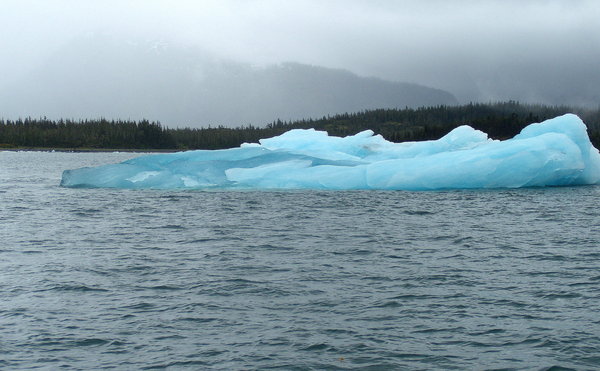That 90 of an iceberg sits under water

That 90% of an iceberg sits under water.

Icebergs have always fascinated us with their majestic beauty and enormous size. These icy structures, which are formed when large chunks of ice break off from glaciers or ice shelves, are a common sight in polar regions. However, what many people may not realize is that what we see above the water’s surface is only a small fraction of the entire iceberg.
Did you know that approximately 90% of an iceberg sits below the water? It may come as a surprise, considering the massive appearance of the exposed section. This fact is not just a misconception but rather the result of a fundamental principle of buoyancy.
To understand why most of an iceberg remains hidden, we need to delve into the physics behind it. Icebergs are made from frozen freshwater, which has a density of about 917 kilograms per cubic meter. The density of seawater, on the other hand, is higher at around 1027 kilograms per cubic meter. This density difference means that the iceberg is less dense than seawater, allowing it to float.

Archimedes’ principle states that an object will float when it displaces a weight of fluid equal to its own weight. In the case of an iceberg, the portion underwater displaces a volume of water that is equal to the mass of the entire iceberg. This principle ensures that the iceberg remains balanced and afloat.
The unseen underwater portion of an iceberg plays a crucial role in its stability. The exposed section above the waterline is merely the tip of the iceberg, often referred to as the “tip of the iceberg” metaphorically. These massive structures can extend several meters or even kilometers beneath the surface, representing an incredible volume of ice.
The significance of the majority of an iceberg being underwater becomes evident when considering the dangers they pose to ships. Due to their size and weight, collisions with icebergs can lead to catastrophic consequences. The submerged part can be difficult to detect from a distance, making navigation through iceberg-infested waters perilous.
While this fact about icebergs may seem remarkable, it is essential for understanding their behavior and potential hazards. Next time you catch a glimpse of an iceberg, remember that what lies beneath the surface holds the true extent of its grandeur. It serves as a reminder of the mysteries of nature and the hidden wonders that await exploration below the water’s depths.
Source: To learn more about the physics of icebergs and related topics, visit bsharp.org/physics/icebergs.
Tags
Share
Related Posts
Quick Links
Legal Stuff

